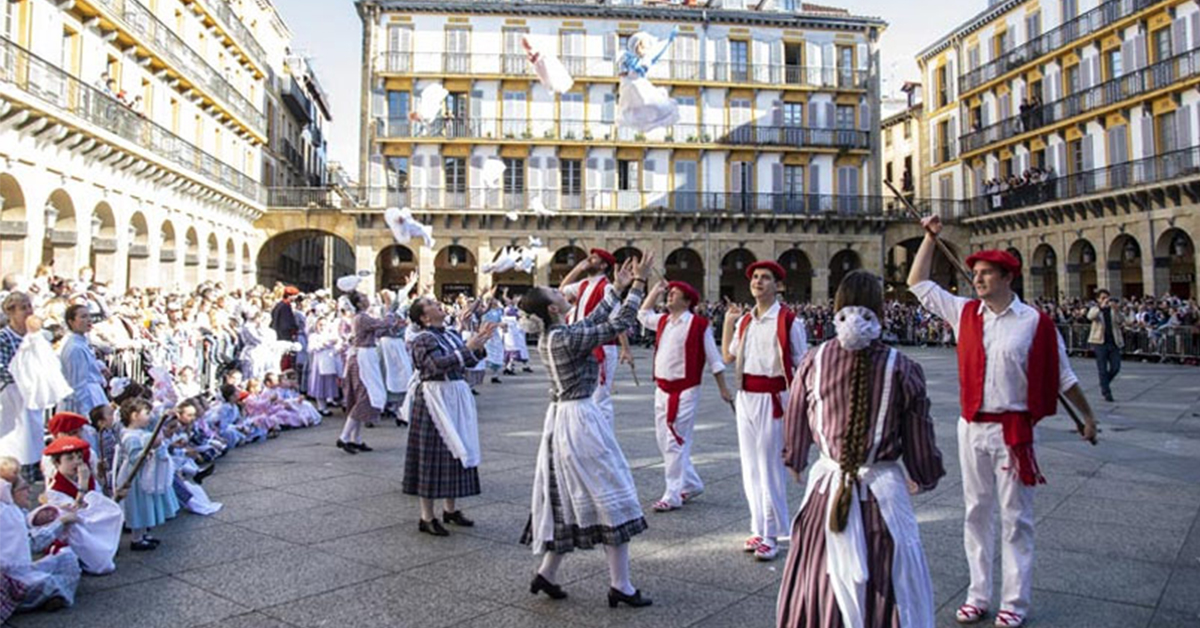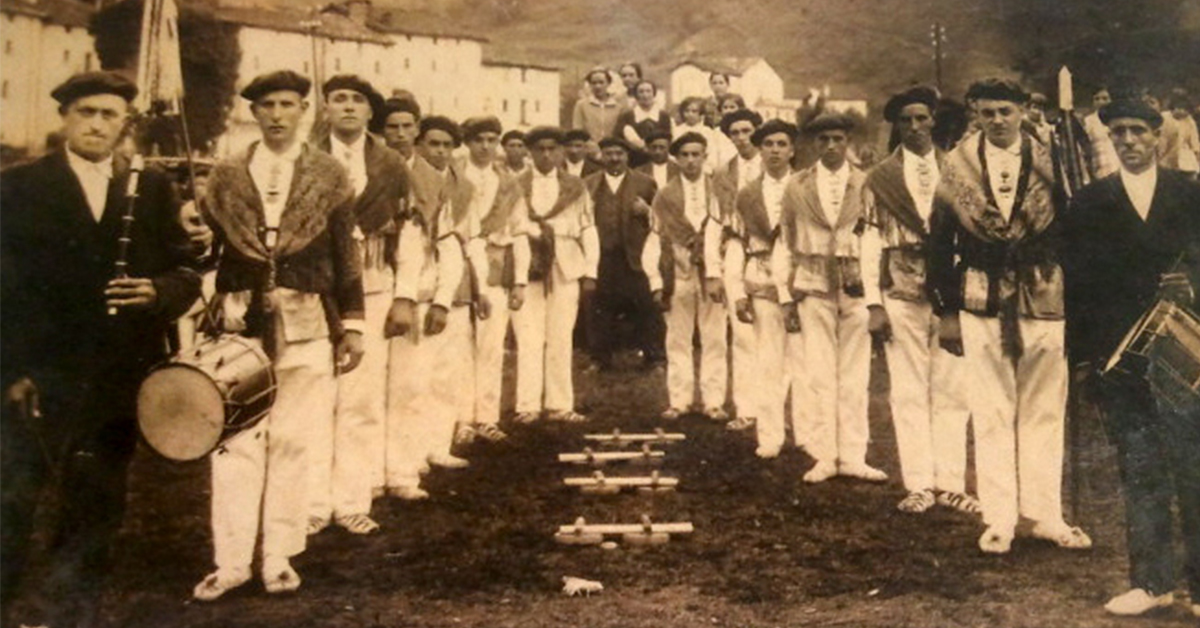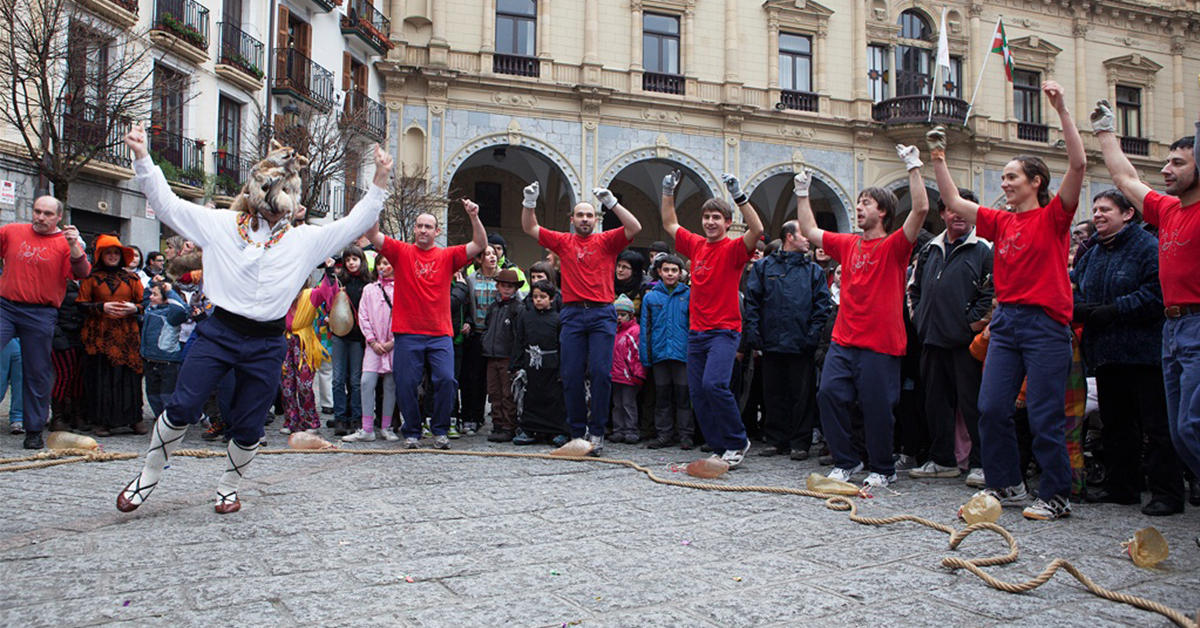Basque ethnography at a glance
Just as dance is at the heart of many celebrations, it also plays a leading role in the carnivals of Gipuzkoa. Although these lines are an approximation of the carnival dances of Gipuzkoa, it must be remembered that dances do not exist in a vacuum and are therefore inevitably intertwined with other elements of the carnival. For example, dancers may wear costumes, or dancing may take place while alms collecting.
There is a great variety of carnival dances in Gipuzkoa. On the one hand, there are those that are repeated in more than one town. In this case, the troupe of Inude eta Artzainak ‘Maids and Shepherds’ occupy a prominent place in Gipuzkoa, as they parade through the streets of seven towns: Astigarraga, Azpeitia, Donostia, Errenteria, Hernani, Irun and Oiartzun. The show is divided into five dances: the Nurse’s Entrance, Kontradantza, the Nurse and the Physician, Kontradantza 2 and Zortzikoa. To finish, all the members of the troupe, dance a fandango and an arin-arin —literally, ‘fast-fast’—. It should be noted that, even if dance is an important element, the show is a kind of parody that goes beyond dance.
Secondly, the Sorgin-dantza ‘Witch Dance’ is one of the main events of the carnival of Antzuola and Bergara. Even though it is also performed in Lezo and Oiartzun with the intention of setting the party, it is not rooted in the form of a local carnival dance. The dancers are placed in two rows, the Sorginak ‘Witches’ on the left and the Intxixuak ‘Wizards’ on the right. They wink and make gestures at each other, so that theatrical and role play aspect of this dance are very important.
Finally, there is the Azeri-dantza ‘Fox Dance’. Although the dance of the same name is performed in three towns, it is not the same dance. In Andoain they perform a new version of the Azeri-dantza, adapted to the alms collection; in Hernani there is a mix of dance and play; and in Errenteria it is the act that begins the carnival.
On the other hand, there are the local carnival dances: the Trapujale-dantza of Lezo and the Zirikuen Zortzikoa; the Ihote-baltsa of Oiartzun; the Iñauteri-dantzak of Lizartza; the Koko-dantza of Eibar; the Txino-dantza of Aretxabaleta; the Inauterietako dantzak of Oñati; Jorrai-dantza in Segura; Txantxo-dantza in Abaltzisketa; Talai-dantza in Amezketa; and Mozorro-zuri Dantza in Ataun, which is in the process of recovery.
It is important to bear in mind that carnivals were banned in 1937 in Spain, and as Franco’s regime kept the ban in force in the following decades, there was a major break in the transmission of all the elements of carnival, including the dances. In the 1980s, recovery processes took place throughout the Southern Basque Country, which led to many changes in the dances, such as the day of the dance, the costumes, the choreography, the music and even the profile of the participants, along with the presence and involvement of women in carnival celebrations. In this way, it is worth underlining that all the above-mentioned carnival dances have been recovered and, in this sense, the work carried out by local dance groups, cultural associations, schools or individuals is to be applauded.
Maddi Dorronsoro – Anthropologist




